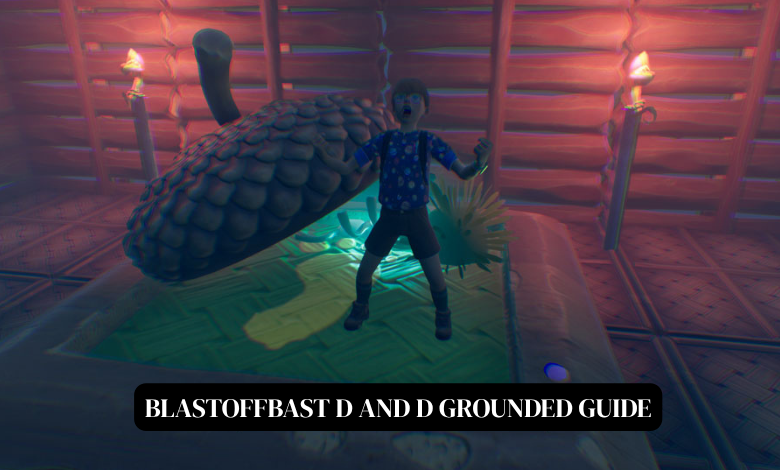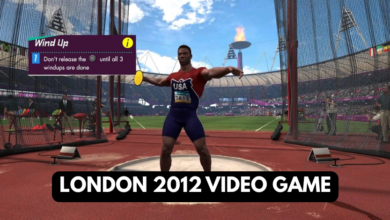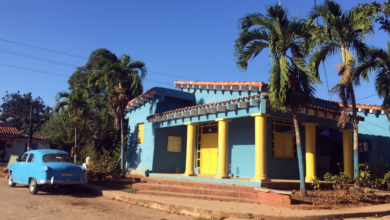Blastoffbast d and d grounded guide

If you’re playing Grounded and love tackling community maps, then “D AND D” by Blastoffbast is a map you absolutely don’t want to miss. It’s a custom “Playground” map where you traverse a maze-style level, avoid traps, face monsters, solve puzzles, and ultimately reach one or more bosses.
When I first loaded up “D AND D,” I was intrigued by how it blends survival mechanics with dungeon-crawler elements. The traps surprised me, and coordinating with my teammates ended up being more important than I initially thought. Over multiple runs, I learned what gear works best, which pitfalls to avoid, and how to keep momentum when things go wrong.
In this guide, I’ll walk you through everything you need: map layout, hazards, class choices, gear loadouts, step-by-step strategies, boss fights, multiplayer tips, advanced moves, common mistakes, and even personal stories. My hope is that by the end, you’ll feel confident to dive in, improve on each run, and maybe even beat it under your own terms.
Let’s get started.
2. Understanding the “D AND D” Playground
2.1 Map code & how to access it
First things first: to play “D AND D,” you need to load it as a Playground (community map) inside Grounded. The official Grounded devs sometimes feature select custom maps in their “Playground Showcase.” In fact, “D AND D by Blastoffbast” was included in one of those showcases.
The map code is: 5XN-5SK-D3V
To load it:
-
Go to the Playground or Custom Maps section in Grounded.
-
Enter the code “5XN-5SK-D3V.”
-
Download and activate the map.
-
Invite friends if you want to play it co-op, or go solo.
Once it’s loaded, you’ll begin at a starting zone and make your way through a maze filled with traps, hazards, and enemies, until you reach boss zones toward the end.
2.2 Map layout & major zones
From what I gathered and experienced, the map is structured like a death maze. You move through segmented zones, each increasing in difficulty or complexity. The theme is somewhat “Minotaurs and Myrmidons” (which hints at heavy combat zones).
Here’s a conceptual breakdown of zones:
-
Entrance / Safe start area: low threat zone, place to stock up
-
Trap corridor / puzzle zone: segments with traps, puzzles, or branching paths
-
Enemy gauntlet: zones with waves of monsters
-
Mid-boss or mini-boss area
-
Final zone: boss fight(s) and exit/finish
Each zone may have environmental hazards, platforming challenges, and puzzles. The transitions between zones often hide traps or surprises.
2.3 Objectives / goals / win conditions
Your primary objective is to reach and defeat the boss(es) (or complete final challenge) to “win” the map. Along the way:
-
Survive traps and hazards
-
Solve puzzles or unlock paths
-
Defeat monsters that block progression
-
Maintain your health and resources
-
Coordinate your team (if in multiplayer)
Failure conditions usually include: dying without means to revive (or running out of lives/respawns), falling into fatal traps, or being so underprepared that you can’t handle the boss.
In short: the goal is survive + defeat the final challenge.
Read Also: Aluminum corporation mj e.i.r.l.
3. Hazards, Traps & Obstacles
One of the key challenges in “D AND D” is mastering the traps and environmental obstacles. Knowing how to detect and counter them will save you from repeated deaths.
3.1 Types of traps
Based on map descriptions and player reports, here are common trap types you’ll likely face:
-
Bounce pad / spring traps: these can launch you off platforms or into danger.
-
Spike traps / floor hazards: stepping on certain tiles triggers damage.
-
Pitfalls / drop zones: hidden holes that drop you to earlier zones or kill you.
-
Timed gates or doors: you need to time your movement to pass before closing.
-
Moving platforms / shifting floors: timing matters.
-
Environmental traps: e.g. falling rocks, swinging blades, gas zones.
In the description, there’s a mention: “Beware of the bounce pad trap, it’s a doozy.” That suggests bounce traps are especially notorious here.
3.2 Environmental hazards
Beyond explicit traps, there are environmental dangers:
-
Enemy spawns near edges or concealed behind walls
-
Dark or low-visibility sections
-
Hazardous terrain (e.g. toxic zones, lava, etc., depending on map theme)
-
Platforming gaps where missing a jump can cost you dearly
3.3 How to detect and avoid traps
Here are practical tips to avoid traps:
-
Move slowly in new zones: don’t sprint blindly.
-
Observe patterns: many traps activate on timer or after a trigger.
-
Use ranged scouting: send a ranged attack or throw a consumable to trigger potential traps from a safe distance.
-
Stay on edges carefully: many traps hide near edges.
-
Watch others’ movement: if playing in co-op, have someone go first to scout.
-
Use class abilities (if any) to reveal traps: some classes might detect or resist traps.
By respecting your surroundings and not rushing, you’ll catch traps before they kill you.
4. Choosing Classes & Gear
In “D AND D,” there are 5 classes to pick from. (That’s given by the map description.) Each class has its strengths and weaknesses. Picking the right one for your playstyle and gearing it properly can make or break your run.
4.1 Class overview: strengths and tradeoffs
Here’s how you should think about choosing:
| Class | Strengths | Weaknesses / Considerations |
|---|---|---|
| Tank / heavy / melee class | High durability, can soak damage, hold the front line | Might be slower or less damage output |
| Ranged / sniper class | Can snipe from safe distance, trigger traps or fight from afar | Vulnerable at close range |
| Support / healer / buffer | Can heal, buff teammates, help in puzzle zones | May lack damage or durability |
| Speed / scout class | Fast, agile, can detect traps or move quickly | Likely fragile |
| Hybrid / jack-of-all-trades | Balanced in offense and defense | Might not excel in either extreme |
(These categories are hypothetical — the actual class names in map may differ. The idea is: pick what fits your role.)
In my runs, I often picked the class that could survive trap damage well while still contributing damage. It helps to have someone who can scout, someone who can tank, someone who can support.
4.2 Recommended weapons, armor & gear
Gear choice is critical. Here’s what I found works well:
-
Weapons
-
A mix of short-range and medium-range weapon is ideal (so you don’t get caught off-guard).
-
High single-target damage weapons for boss fights.
-
Ranged or piercing weapons help in triggering distant traps (safely).
-
-
Armor
-
Prioritize defense and mobility.
-
Resistances vs trap damage (if such stats exist).
-
Lightweight armor so you don’t slow down.
-
-
Consumables & buffs
-
Healing items (healing spray, first aid kits).
-
Buff potions (damage boost, speed).
-
Trap-detection or vision items (if available).
-
Always carry backup gear. If your best weapon breaks or becomes inefficient, you want a fallback rather than being defenseless.
4.3 Consumables, buffs, support items
I can’t stress this enough: consumables often decide the run when things go wrong.
-
Healing: Always carry more than you think you need.
-
Buffs: Speed buffs, damage buffs, or resist buffs are valuable before entering trap-heavy or boss zones.
-
Utility items: If the map or class allows, bring items that detect traps or highlight hazards.
-
Throwables / projectiles: As mentioned, use them to test unknown zones ahead of you.
5. Walkthrough: Step-by-Step Strategy
Here’s how a sample run might go, with tips along the way. Use this as a template and adapt based on your gear and team.
5.1 Early section: safe paths & initial movement
-
Begin cautiously. Don’t rush forward before checking your surroundings.
-
Use ranged scouting (throws, arrows, or bullets) to activate traps ahead of you from a distance.
-
Stick to walls or edges when possible (to reduce exposure).
-
When encountering branch points, choose paths that give you cover or fewer traps.
5.2 Mid map: puzzles, branching, escalating challenges
-
In puzzle zones, look for levers, pressure plates, or visual clues (like patterns on walls or floor).
-
Don’t hesitate to backtrack if a route seems too trap-heavy. Sometimes the safer route is longer.
-
Save high-damage gear until after trap zones, so you don’t lose your best weapon early.
-
Be weary of ambushes — enemies may spawn behind you. Keep at least one teammate watching the rear.
5.3 Late map / boss zones: execution time
-
Before entering boss zones, heal up, apply buffs, and distribute roles (who handles adds, who is main DPS).
-
Use the environment: cover, elevated ground, or choke points.
-
Focus adds (smaller enemies) first if boss spawns them, unless the boss is immediately threatening.
-
Don’t get greedy: when a boss phase ends, retreat, heal, reposition before continuing.
-
If you have multiple lives or revives, coordinate so that someone is always alive to revive others.
5.4 Example route (imagined)
Here’s one possible route:
-
Start zone → clear the first corridor (using ranged scout)
-
Pick the right path taking cover
-
Enter puzzle zone, solve via levers in sequence
-
After puzzle, enter enemy gauntlet
-
Defeat mini-boss
-
Move through a trap corridor with bounce pads (slow traversal)
-
Arrive at final arena, buff up, fight boss
On my first run, I messed up the bounce pad zone and got knocked off halfway — cost us a life. In later runs, we tested sections with projectiles first, spotted the pad timing, then passed carefully.
6. Bosses & Mini-Bosses
Let’s talk more about how to take down boss(es) — usually the climax of the map.
6.1 What bosses appear (expected)
The map description hints at Minotaurs and Myrmidons as the underlying theme. That suggests large, powerful melee enemies, likely with high health and strong attacks.
You’ll probably see:
-
A main boss (Minotaur or variant)
-
Possibly supporting Myrmidon-type enemies (faster, weaker)
-
Environmental hazards even in boss zone
6.2 Tactics & positioning
Here are strategies I found effective:
-
Tank up front: let your tank class hold the boss’s attention.
-
Spread out: avoid clustering so that area attacks don’t wipe your team.
-
Dodge frequently: boss attacks often have wind-ups; don’t stand still.
-
Use positioning: try to bait boss to predictable positions and kiting pathing if possible.
-
Use cover / pillars (if map supports) to block line-of-sight or boss projectiles.
-
Focus priority targets: if the boss spawns adds, kill adds first unless boss is overwhelming.
6.3 Gear vs boss
-
Use your strongest weapons, buffs, and healing before the fight.
-
Bring gear that improves sustain (healing over time, damage resist).
-
If possible, bring a weapon that has burst damage (for finishing blow).
-
Don’t enter with low durability gear — you’ll regret it.
7. Team Play / Multiplayer Tips
Playing with others (recommended for harder maps) adds another layer of strategy.
7.1 Role coordination
Divide roles clearly:
-
Tank / frontliner: take hits, lead the way
-
Damage / DPS: stay behind, clean up enemies
-
Support / buffer / healer: heal, buff, assist in puzzles or trap detection
-
Scout / speed class: check paths ahead, reveal traps
Having these roles helps reduce confusion and overlapping tasks.
7.2 Communication & timing
-
Use voice or ping signals to mark traps, routes, or danger zones.
-
Let teammates know when you’re triggering something.
-
Synchronize abilities: don’t use buffs early then die before fighting.
-
Stay aware of teammates’ health and positions — don’t push ahead without them.
7.3 Revives & backup plans
-
Always have someone alive who can revive others.
-
Spread out in traps so you don’t all die at once.
-
If a teammate is down, retreat temporarily rather than pushing blindly.
-
Use backup gear or fallback plan if someone loses their main weapon.
8. Advanced Tips & Tricks
Here’s where experience counts. These are tactics that go beyond basics.
8.1 Hidden paths & shortcuts
-
Some walls or floor tiles may be destructible or secret. Try attacking suspicious-looking textures.
-
Watch for visual clues (worn walls, irregular floors) — they often hide shortcuts.
-
Sometimes bypassing a trap-heavy corridor is better, even if it’s longer.
8.2 Speedrun tactics
-
Memorize trap timings and patterns.
-
Use the fastest class or character path to reduce downtime.
-
Skip nonessential fights if health allows.
-
Use buffs and heal items optimally (don’t waste them early).
-
Practice transitions between zones to reduce hesitation.
8.3 Adaptive strategies
-
If your team gets stuck, switch roles or gear.
-
Use ranged approaches if melee fails.
-
Don’t hesitate to restart a run; early mistakes often snowball.
-
Learn from each run: note which zones are weak links and practice them.
9. Common Mistakes & How to Recover
Even seasoned players mess up. Here are pitfalls and how to recover from them:
| Mistake | Why it happens | Recovery / Prevention |
|---|---|---|
| Overextending | Rushing into trap zones or enemy waves | Move slowly, scout ahead, use ranged triggers |
| Poor gear choice | Being underpowered for boss fight | Always upgrade before entering dangerous zones |
| Ignoring traps | Assuming no traps will be next | Be cautious continuously, assume trap in every new zone |
| Lack of teamwork | Everyone doing their own thing | Assign roles before run, use communication |
| Wasting consumables early | Using buffs/HP items when not needed | Save high-value consumables for tough zones |
| Not backing off | Staying in bad positions rather than retreating | Retreat temporarily, heal, reposition |
| Forgetting to scout | Walking blind into unknown traps | Use ranged projectiles to test first |
If you make a mistake:
-
Pause mentally — don’t panic.
-
Use fallback gear or consumables.
-
Retreat if possible, regroup.
-
Reassess path — maybe take a different route.
-
Learn from that error for the next run.
10. Personal Stories & Lessons Learned
I want to share a few moments from my own runs of “D AND D,” because they taught me things you can’t learn just from theory.
Run #1 (solo attempt):
I underestimated the bounce pad zone. I rushed through, got launched off, lost a life, and had to retreat several zones. After that, I switched to a more cautious style, using ranged triggering to test each pad. That shift alone increased my success rate.
Run #2 (co-op with friends):
We split roles: one person scouted ahead, two held flanks, one stayed back to heal. We survived the mid-boss easily. But in the final boss room, we clustered together and got wiped by an area-of-effect attack. From that we learned to spread out more and stagger attacks.
Run #3 (speedrun attempt):
We memorized trap timings, skipped nonessential fights, and moved as a tight unit. We managed to finish in under a targeted time (for us). The key: confidence in known paths, minimal hesitation, and excellent communication.
Lessons learned:
-
Don’t get cocky — even in “safe” zones stay alert.
-
Every run is valuable — you’ll fail a lot early on.
-
Adapt roles dynamically. If someone’s dying often, have them switch role or class.
-
Practice small segments in isolation — e.g. bounce pad zone only — until you’re consistent.
11. Conclusion & Next Steps
“D AND D by Blastoffbast” is a challenging, fun, and rewarding custom Grounded map. It combines traps, enemies, puzzles, and boss fights into a coherent death-maze experience. If you approach it patiently, equip your team right, communicate well, and learn from each attempt, you’ll see steady improvement.
To recap best practices:
-
Load map using code 5XN-5SK-D3V
-
Move cautiously, scout ahead
-
Pick class & gear suited to role and map demands
-
Use consumables wisely
-
Coordinate with your team
-
Learn trap patterns and shortcuts
-
Avoid common mistakes and adapt on the fly
Your next steps:
-
Do a few practice runs just exploring zones without pushing boss fights
-
Try different class & gear combinations
-
Record (or note) where you fail most often and practice those zones
-
After you feel comfortable, attempt a full run and aim to beat the map
I’m excited for you to try it. If you run into specific trouble spots (like a trap you can’t figure out, or a boss phase you can’t beat), I’d be happy to help dig into that too.
FAQ
Q1: Can I play “D AND D” solo or is it meant for multiplayer?
You can play solo, but certain zones or bosses might be much harder. Multiplayer gives advantages in role division and backup revives.
Q2: What class is the best?
There’s no absolute best — it depends on your style. I like a mix: someone tanky, someone ranged, someone support. Try classes and see which fits your team.
Q3: What if I’m stuck on a trap zone?
Stop and observe. Use ranged triggers first. Try alternative paths. If repeatedly failing, switch gear or roles.
Q4: Is there a speedrun community for “D AND D”?
I’m not aware of a major one yet (as of my research), but with popularity, runs might surface in Grounded community forums.
Q5: Can the map be updated / changed?
Yes — creators sometimes update custom maps or devs might re-feature them. Always check for updates or patches in Playground sections.



